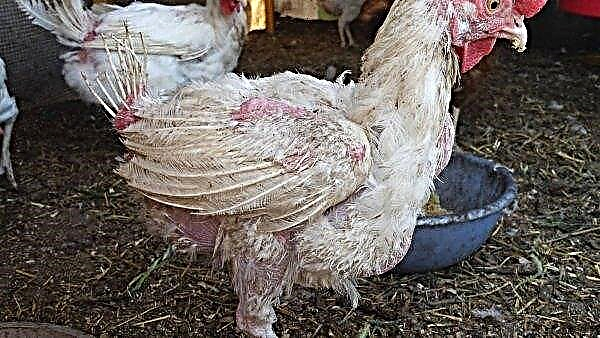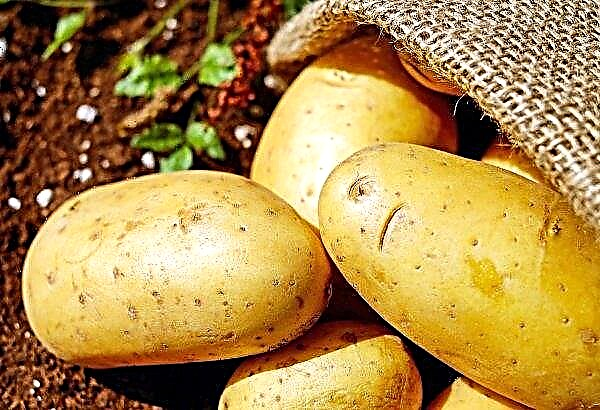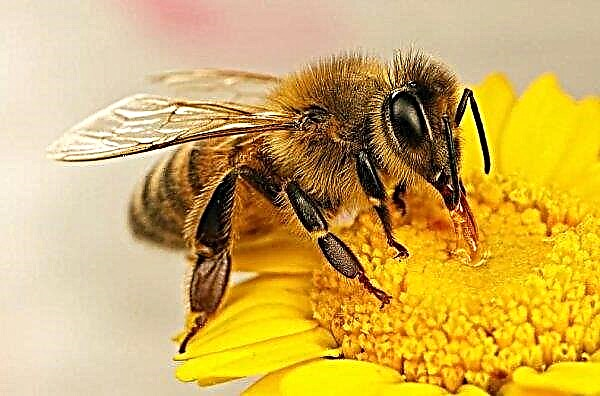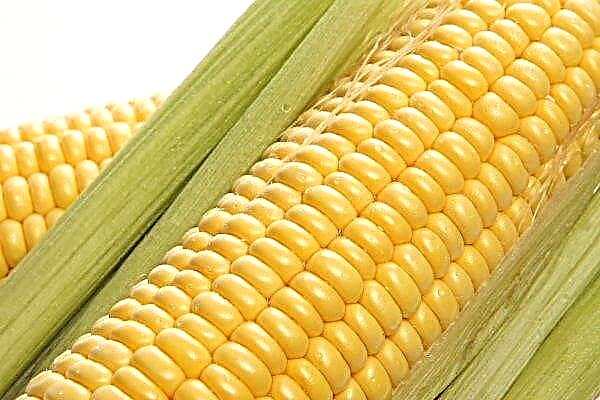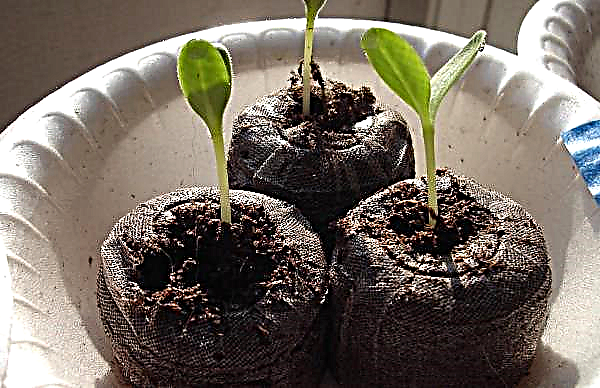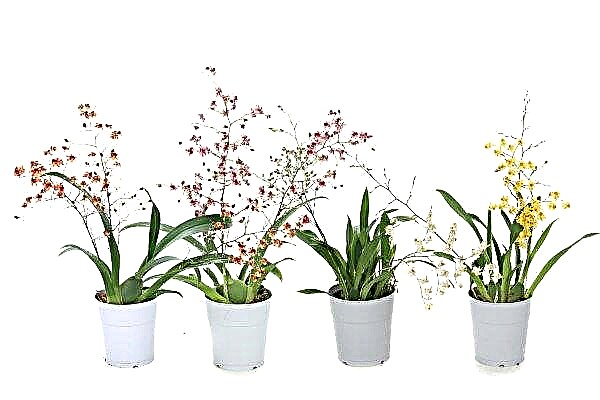Alyssum is a low-growing ground cover crop that blooms with white, purple, or pink flowers. It is great for temperate areas, including coastal areas. Read more about how to plant and grow unpretentious alissum in the open ground, read further in the material.
Plant characteristics
Alyssum belongs to the crucifer family. This is an annual or perennial herb that can be grown with seeds or seedlings. It is planted in early spring, but not earlier than the frosts pass, and warm weather is established.
A carpet of fragrant flowers will cover your flower bed until the frost. In the heat, the plant may fade, but with the appearance of coolness and moisture it will again begin to please the greenery. The botanical name of the plant is Lobularia maritima.
Important! Alyssum planted from seeds blooms later than the one planted with seedlings.
Its main characteristics:
- natural distribution range: Mediterranean, in France in the Bay of Biscay;
- height: 10–20 cm;
- distribution width: 15–22 cm;
- Lighting: sunny area, partial shade, shadow;
- soil type: rich loam;
- soil acidity: neutral;
- flowering time: June - October, and in a warm climate - almost all year round;
- flowers: cruciform, 4-lobed, white, pale pink and purple flowers, collected in rounded brushes;
- leaves: narrow, spear-shaped, slightly pubescent, gray-green, during flowering they are almost invisible due to the abundance of flowers;
- endurance zone: 7–11 (minimum winter temperature –17 ° С);
- Features: resistant to climate and uneven irrigation;
- aroma: sweet, steady;
- reproduction: by seeds (self-sowing).
Video: Alyssum from sowing to flowering
Seed cultivation
The plant loves sunny areas, but does not tolerate drought. Therefore, it is not recommended to plant it where it will be in the open sun all day. In July - August he will need additional watering.
Start growing alissum from seeds. Although not all new varieties are available as seed planting material. You can also familiarize yourself with the offers of nurseries seedlings of interest varieties. It is available in spring. Or order seeds through online stores.
When to sow a flower
Planting occurs in well-drained, humus-rich soil. If you intend to grow seedlings, then prepare it for 8-10 weeks before planting in the ground.
Given that in nature the seeds fall into the ground and remain inactive until spring, you can sow them in the winter. But this method has disadvantages typical for all flowers: seeds can be eaten by insects, they will be accidentally weeded out with grass, and they will sprout unevenly. To arrange the flowerbed, gardeners collect them and plant them in the spring. In moist soil at a temperature above + 15 ° C they will germinate in a week.Important! For landing on the street it is necessary that frosts pass, and the air warms up to + 15 ° C and above.

How to sow
Any flower is best planted where it can be demonstrated. For example, along the alleys or in the flowerbed in front of the building. It goes well with higher annuals such as sage and perennial zinnias. In rock gardens, it is planted next to other stunted plants or wildflowers. Alyssum can also be planted in pots to decorate arbors, patios and terraces.
Important! For disease prevention, seeds are treated before sowing for 20 minutes. in a solution of any fungicide. It may be Alirin-B or another drug of the same type.
No seedlings
In the garden, seeds are sown after the threat of spring frost. To do this, loosen the bed, then sow and just slightly push them into the ground. Watering the landing site with water from a watering can. Seeds never close deeper than 1 cm, because this affects the rate of germination. A typical method of sowing is in rows. The width between them is 10 cm. The seeding rate is 4–5 g / m².
With seedlings
Seedlings begin to grow in the second half of February. To do this, prepare containers with nutrient soil. It can be peat mixed with garden soil, or humus. You can also buy in the store a mixture for flowering annuals. Soil acidity should be neutral (up to 6.2 pH).
Step-by-step instruction for growing seedlings:
- Fill containers with nutrient soil.
- Humidify it with a spray gun.
- Sow seeds at a distance of 5-10 cm from each other.
- Press them by hand and sprinkle with a small layer of soil on top.
- Cover with polyethylene to create a greenhouse effect.
- Place the container in a warm room with plenty of sunlight.
 Seeds will germinate in a week. Then the film is removed, and the seedlings are set so that it is evenly lit and does not stretch.
Seeds will germinate in a week. Then the film is removed, and the seedlings are set so that it is evenly lit and does not stretch.The temperature in the room should be at the level of +15 ... + 17 ° С. It is advisable that it decline at night. After 2 months, the prepared plants are planted in a constant place of growth.
For seedlings need to maintain a constant soil moisture. At the same time, it must be well ventilated. A week before landing on a permanent place, you can begin hardening. To do this, the plants are taken out to fresh air, as well as other cruciferous seedlings for a couple of hours a day, gradually increasing the hardening time.
Some gardeners advise diving plants in the phase of 2-3 true leaves. A dive is a transplant in which the lower part of the root breaks off. This stimulates the development of lateral roots and makes seedlings more powerful. But in relation to colors, this technique is not used by everyone. Her opponents note that plants grow too fast, are well received in the ground and do not need a pick.
Did you know? The peculiarity of alissum is that it can grow even in the cracks between the stones. It is important for him that the root simply had something to gain a foothold in.
Outdoor landing
Planting seedlings in the ground begins in April or May, if the temperature has reached + 15 ° C. This can be done wherever there is a site that is illuminated by the sun for 4 hours a day and there is moist fertile soil. If the soil is acidic, then long before planting, preferably in the fall, chalk should be added to neutralize acidity. The application rate is 300 g / m².
If the soil is acidic, then long before planting, preferably in the fall, chalk should be added to neutralize acidity. The application rate is 300 g / m².
The size of the plot does not matter. But the distance between plants should be at least 15 cm. This is important, because the alissum is ground cover and each flower will spread to an area of up to 20 cm in diameter.
Choose a moderately sunny, non-hot day. Prepare seedling boxes. Dig the soil on the site, removing stones, weed roots and breaking large clods of earth. If necessary, mix the soil on the bed with humus, if it is not loose and nutritious.
Important! Strongly overgrown bushes can be divided so that each has its own growth points. Or plant as it is, but take this into account when determining the distance at which the next plant will be planted.
Landing technology:
- Plant seedlings in holes equal in size to the resulting roots. Their approximate size is 7 × 7 cm. After planting, be sure to water.
- To correctly determine the distance between plants when planting in a permanent place, pay attention to the requirements specified in the description of the variety. It can be both 30 and 90 cm.
- Do not root the soil in which seedlings grew. Plant with her.

Outdoor flower care
Caring for alissum in the ground will be classic: watering, top dressing, loosening the soil and removing weeds, pruning flower stalks when the plant fades. It is important for the soil to constantly maintain moisture. Since the roots are shallow, you need to water a little, but often.
Important! If the alissum does not have enough moisture, it starts to drop flowers, so do not forget to check the condition of the soil.
The depth of impregnation is not more than 10 cm. Irrigation frequency - 3 times a week. Make sure that there is no stagnation of water. This contributes to the development of diseases. But do not let the soil dry completely between irrigation.
 On the second day after watering, the soil must be loosened. Weeds compete with other plants for nutrients and moisture. To prevent depletion, carry out cultivation with the obligatory removal of weeds. If it is rainy weather, then loosen after the soil dries.
On the second day after watering, the soil must be loosened. Weeds compete with other plants for nutrients and moisture. To prevent depletion, carry out cultivation with the obligatory removal of weeds. If it is rainy weather, then loosen after the soil dries.
For those who are short of time, it is recommended to lay a layer of mulch under the bushes. It can be sawdust, chopped straw, husk from pine nuts, needles. The mulching layer will protect the soil from the rapid evaporation of moisture and from the growth of weeds. The depth of the layer is up to 6 cm. Accordingly, your need for loosening, removing weeds and frequent watering will disappear.
If fertilizers are applied to the site at the time of planting, then you do not need to fertilize the plants within 3-4 weeks. And then they begin to make fertilizing. Mix in a bucket of water 1 tbsp. spoon with a mountain of urea and 1 tbsp. spoon "Agricola-7". This is enough to water 1 sq. Km. m. territory. Repeat feeding every 4 weeks throughout the growing season.
Did you know? The scientific name of alissum — Lobularia maritima, or Alyssum maritimum, comes from Greek words meaning “little pod” and “sea”.
Pruning to improve flowering
Alyssum can be grown as a perennial in regions with a warm climate. Therefore, in spring, the flower garden is cleaned of dry leaves. During winters with little snow, foliage is not recommended for autumn. It will protect the roots from damage by crystals of freezing moisture at temperature extremes. In summer, to ensure lush flowering, the plant needs to be pruned periodically. This stimulates the further laying of peduncles.
In summer, to ensure lush flowering, the plant needs to be pruned periodically. This stimulates the further laying of peduncles.
Summer pruning is carried out when some of the flowers begin to fade. This happens in June-October. Alissum blooms in waves. And there is no exact time for pruning. Because the beginning of a new flowering, as well as the withering of the previous flowers, depends on the climatic conditions of the region. It ceases to bloom only in November, but is not cut for the winter.
Important! Do not forget to wipe the cutting edges of the tool with alcohol or a solution of whiteness with water before cutting.
The lush alissum looks great in full bloom. Timely and proper pruning is very important for proper growth and abundant flowering. In addition, overgrown bushes look messy, and pruning will give them a compact and well-groomed shape.
For this, the gardener will need to take the following steps:
- Inspect plants every 2 weeks.
- Trim stems that are too long or dried out.
- Cut 1/3 of the height of the plants once a month. Under the long stems, the leaf part develops well. Therefore, they are cut to stimulate the development of flowers.
- Trim individual stems that have bloomed or that have unattractive rare foliage.
- Trim the plant as often as necessary. Pruning does not negatively affect the flowers, and they cannot get sick from this.
Stopped to bloom: what to do
The absence of flowering in any plants means that there is an excessive amount of nitrogenous fertilizers in the soil. In this case, leaves actively develop, and buds are not laid. Then the plant does not bloom. Therefore, the "excess" fertilizer can be washed off with abundant watering, and then reduce the next top dressing by half. And be sure to shorten the plant by 1/3 to stimulate the appearance of new peduncles.

Another reason why the plant does not bloom may be the poor quality of the seed material, that is, you just bought the seeds of another ground cover culture in alissum packaging.
Diseases and pests
Alyssum does not need too much care. But it should be remembered that with excess moisture, the root system can begin to rot. This factor is enhanced if the flowers are planted in the shade or in a swampy area in a lowland where moisture often accumulates. Therefore, be sure to follow the correct regime for flower care. To prevent any fungal diseases, plants are sprayed with a 1% solution of Bordeaux fluid. 
The most dangerous pest for alissum is the cruciferous flea. To combat it, spray with a solution of water with vinegar essence (1 tablespoon per 10 liters of water). Caterpillars that hatch from the eggs of a butterfly-cabbage butterfly are also dangerous for flowers. To destroy them, they treat the plants with a decoction of tobacco (200 g) and insecticidal soap.
Care after flowering
Flowering ends in October, when there is very little left to frost. If alissums bloom in containers, then they can be brought into the room before frost, and then flowering will last all winter until spring.
Those parts of the plant that have bloomed must be cut off. Firstly, dry stems do not decorate the appearance, and secondly, their removal gives the plant a command to form new peduncles and leaves.
How to collect seeds
Seed collection begins in October or November. To do this, on a dry, calm day you need to lay a plastic film under the bush. Collect inflorescences on it. Grind them in your hands to disconnect the seeds from the rest of the peduncle. Dry them on clean sheets of paper in a dry, warm, well-ventilated area and collect in a paper bag. Store seeds in it until the time of planting.
If you are late and the alissum drops the seeds, take a broom and collect them in a scoop. And then sift, separating from soil, particles of leaves and grass. Dry and store just like the rest.
Video: Alissum Seed Harvest
Winter preparations
Most varieties of alissum in winter do not tolerate temperature drops. They are not intended for outdoor cultivation in areas with a minimum temperature below –17 ° C. For exact frost resistance information for your variety, see packaging.
To protect alissums from frost, they are covered with a layer of mulch. It can be leaves, needles and other organic materials. In regions with snowless winters, this layer is made thicker than 6 cm.Important! Trimming flowers before wintering is not recommended for several reasons. Firstly, dried leaves will simply cover the roots from frost, and secondly, so as not to stress the plant.

When and how best to cut
Trim the alissum as needed. If you see too long a stalk with rare leaves - cut. Flowers faded, and dry flower stalks remained - cut too. The correct time for trimming does not exist.
Prepare secateurs for work. It should be well sharpened, and its cutting edges wiped with alcohol. Wipe it again after work. With the help of pruning, the gardener gives the flower garden a well-groomed appearance.
Important! Cut dry parts as they arise. Trim alissums at 1/3 of the height 1 time per month.
Long flowering alissum can decorate any garden. It grows well in temperate zones. It does not require careful care and special growing conditions. It can be planted in flowerpots and in open areas, so it will be interesting to a wide range of gardeners.

